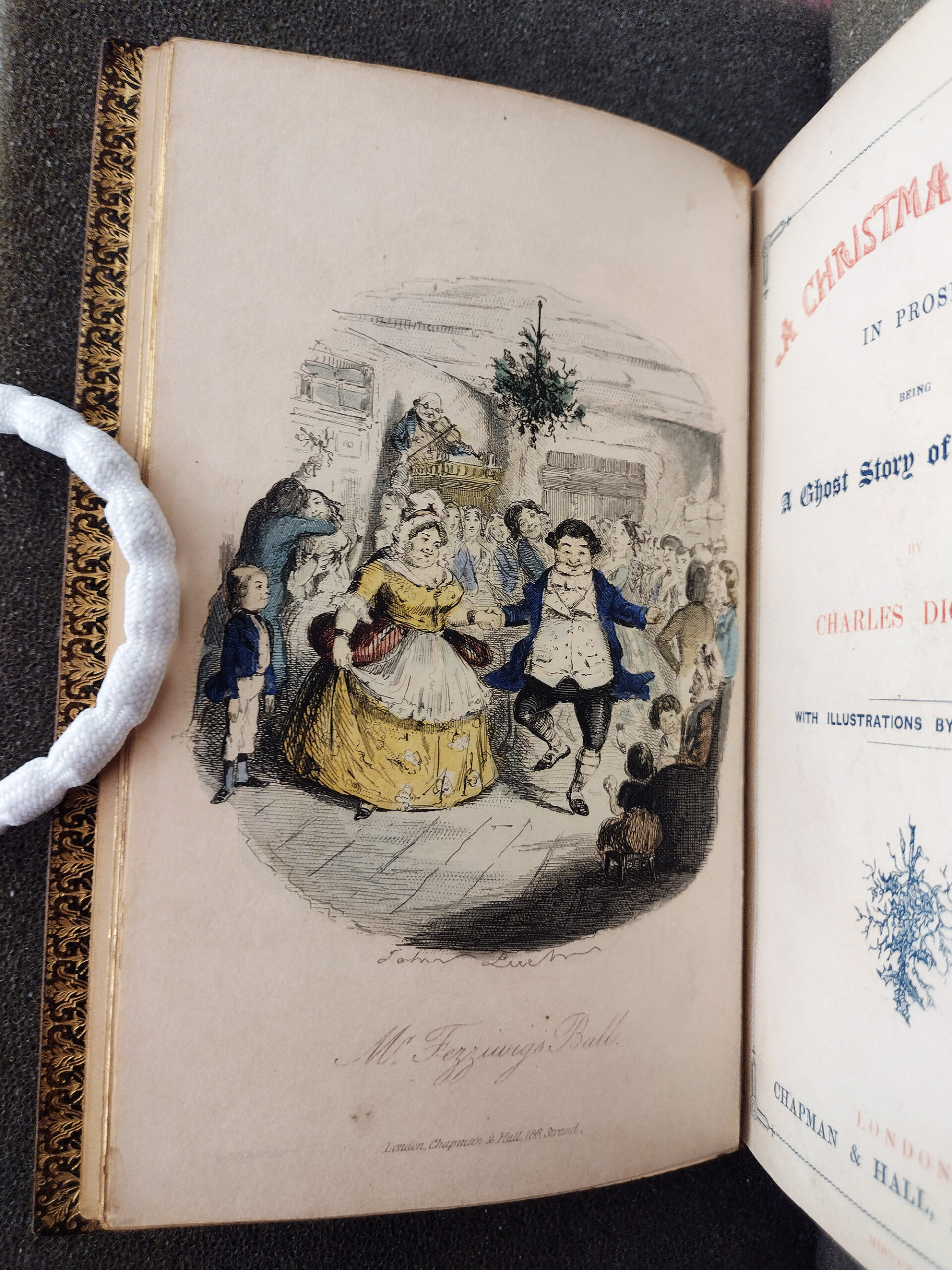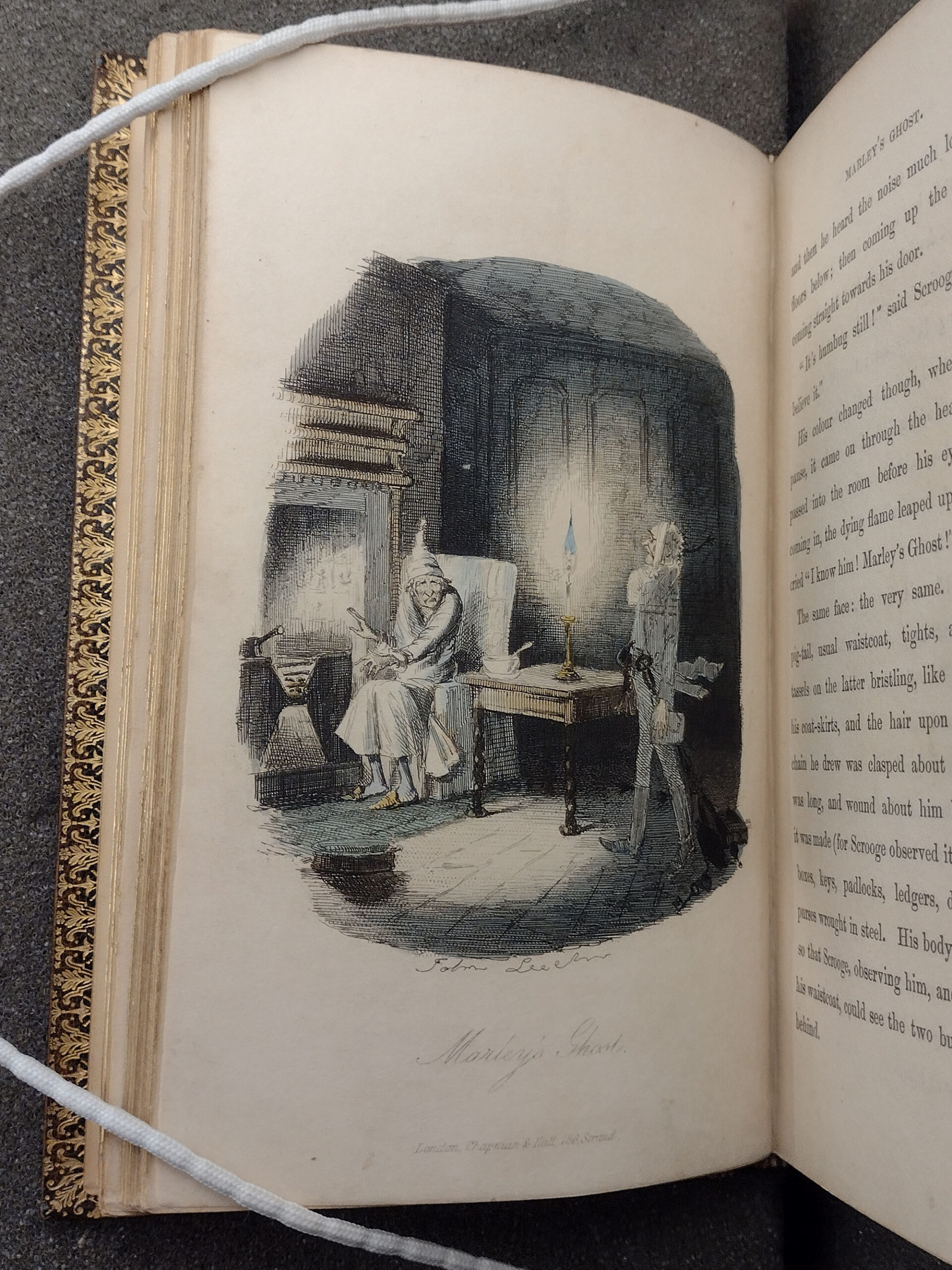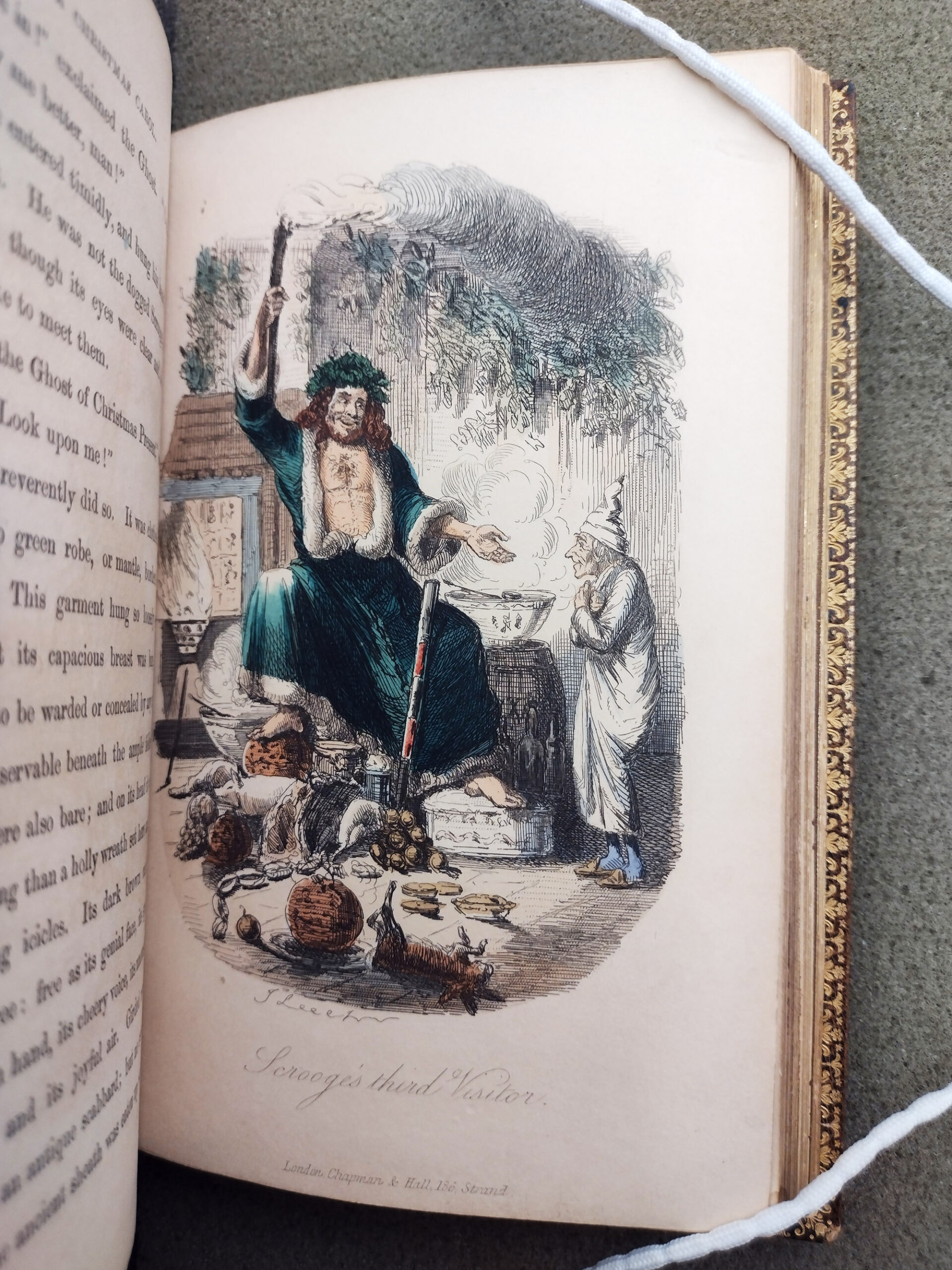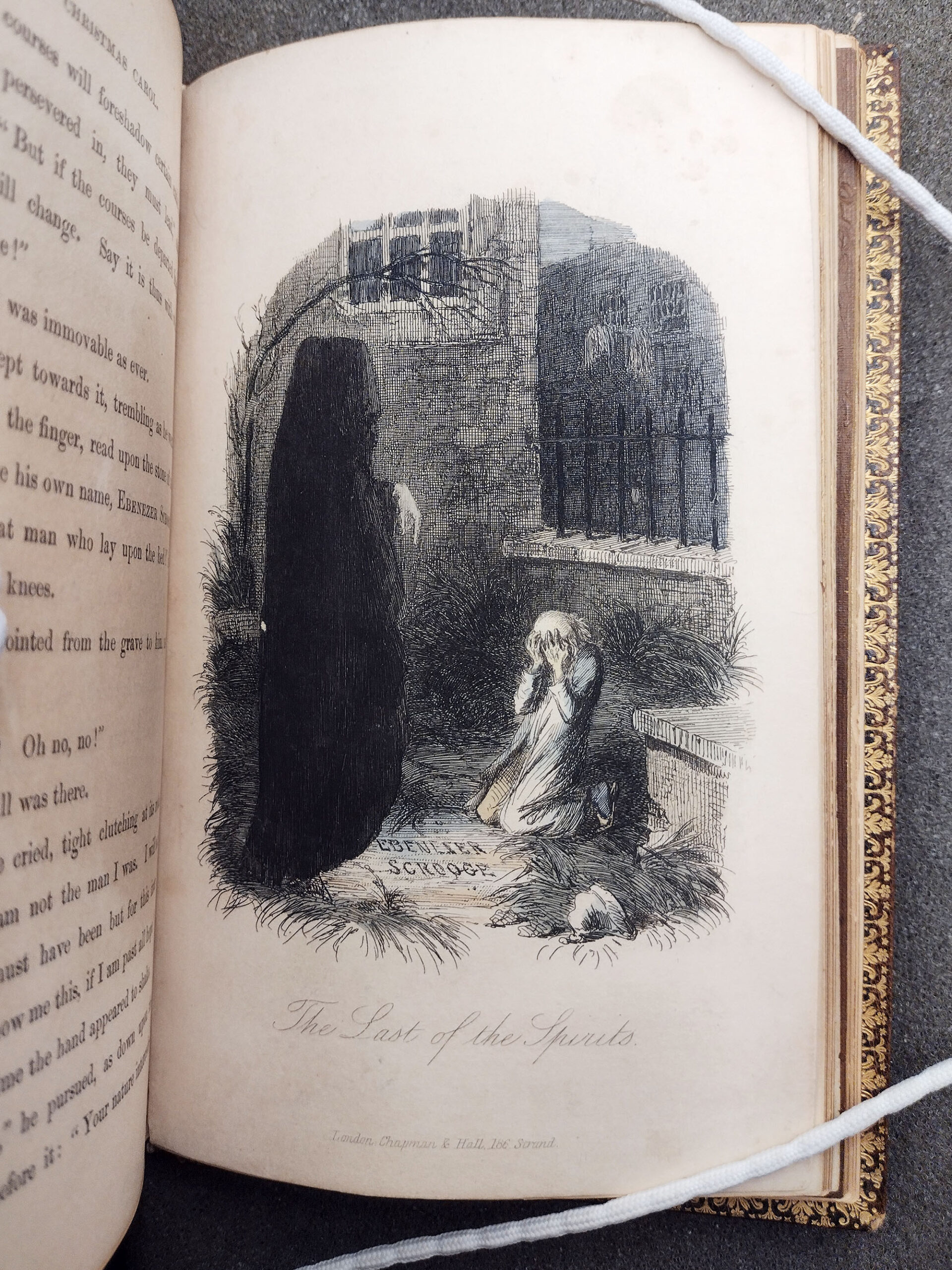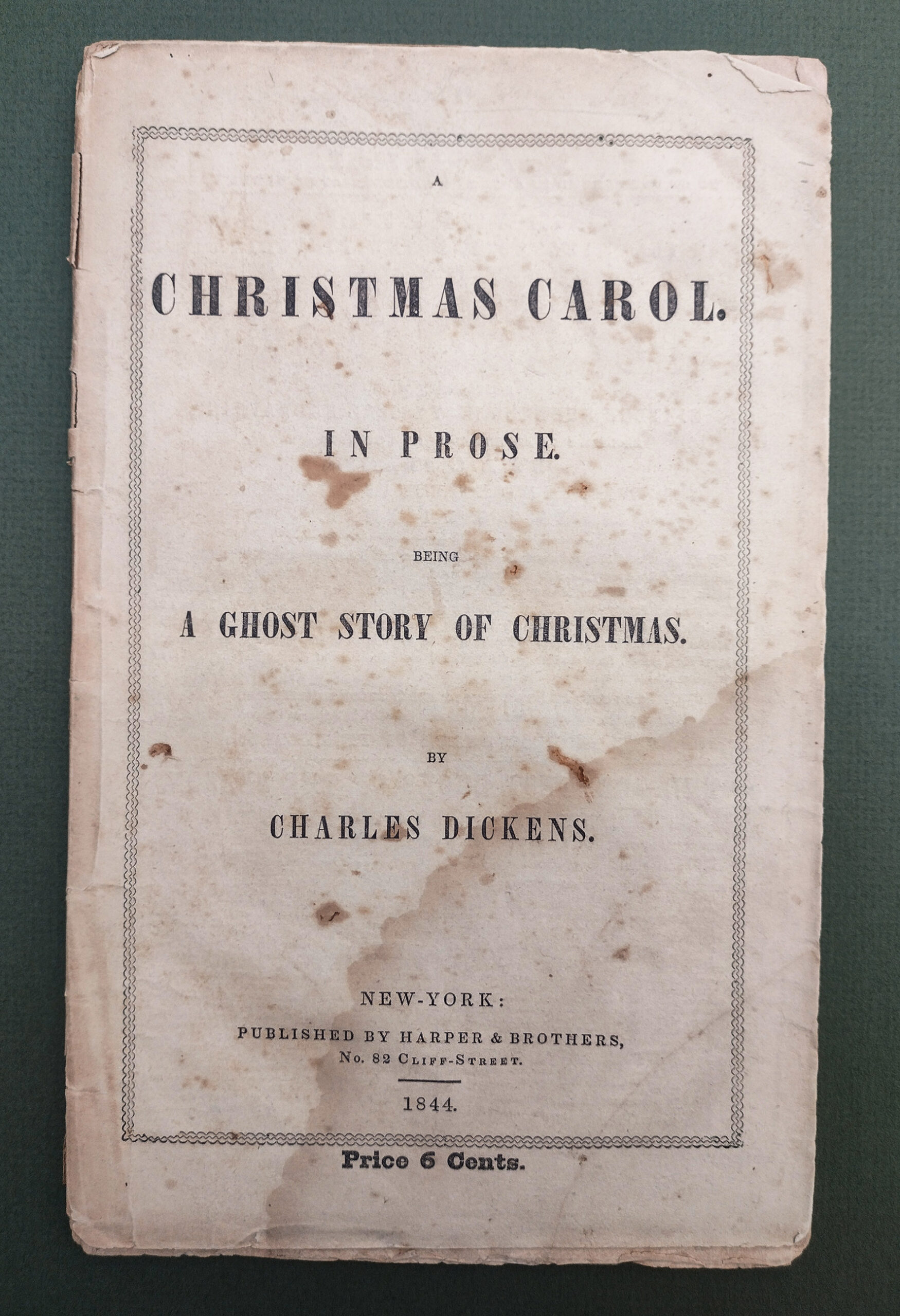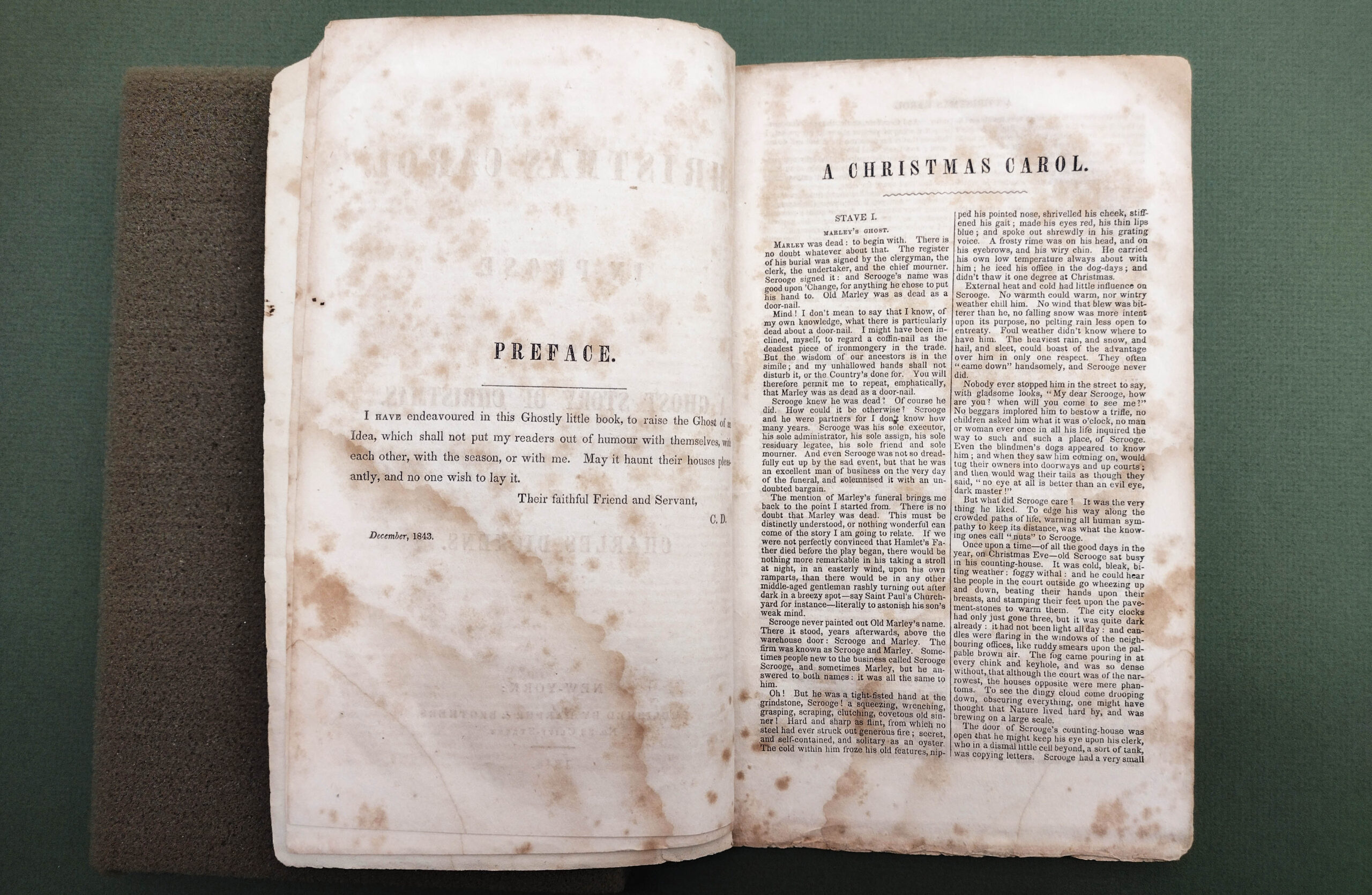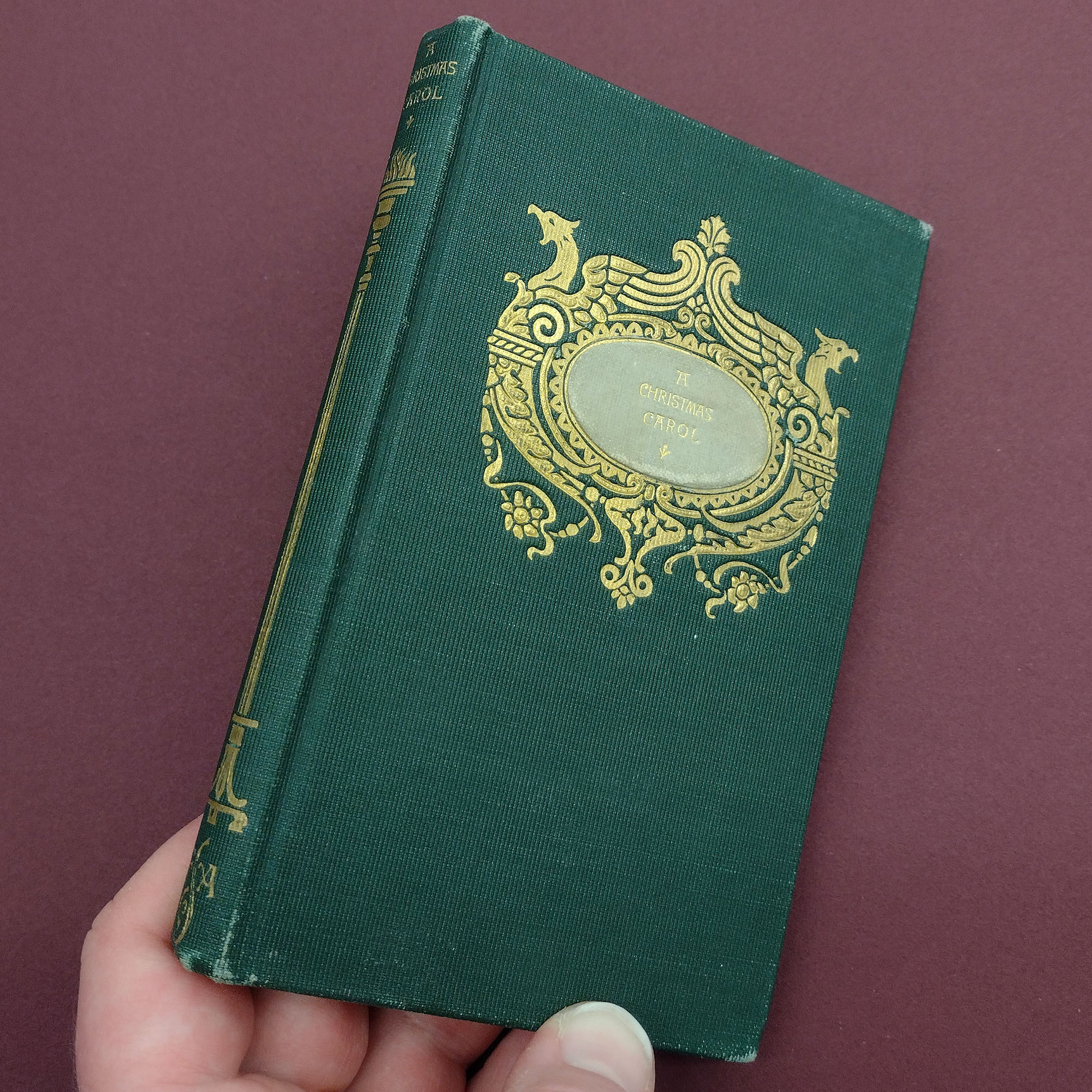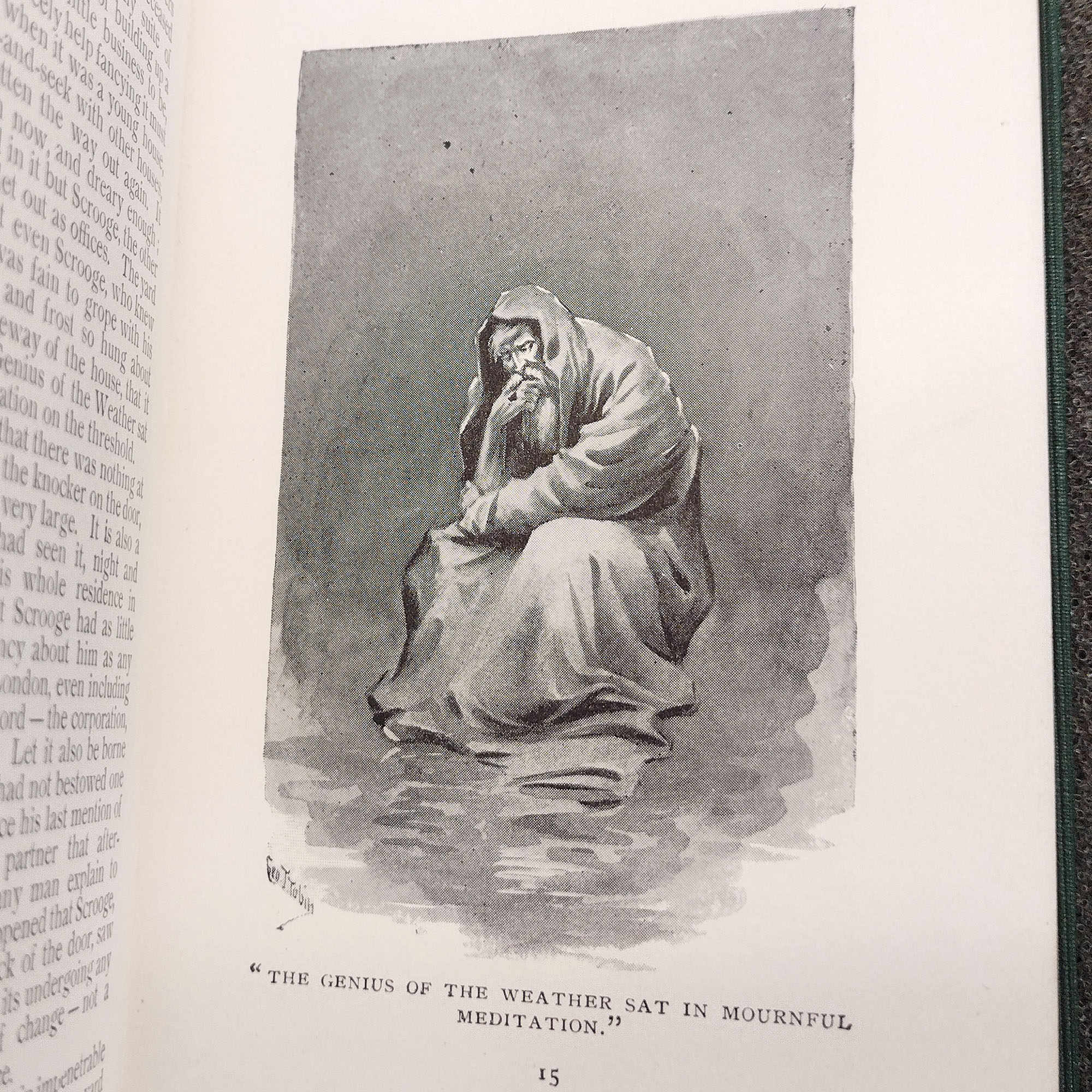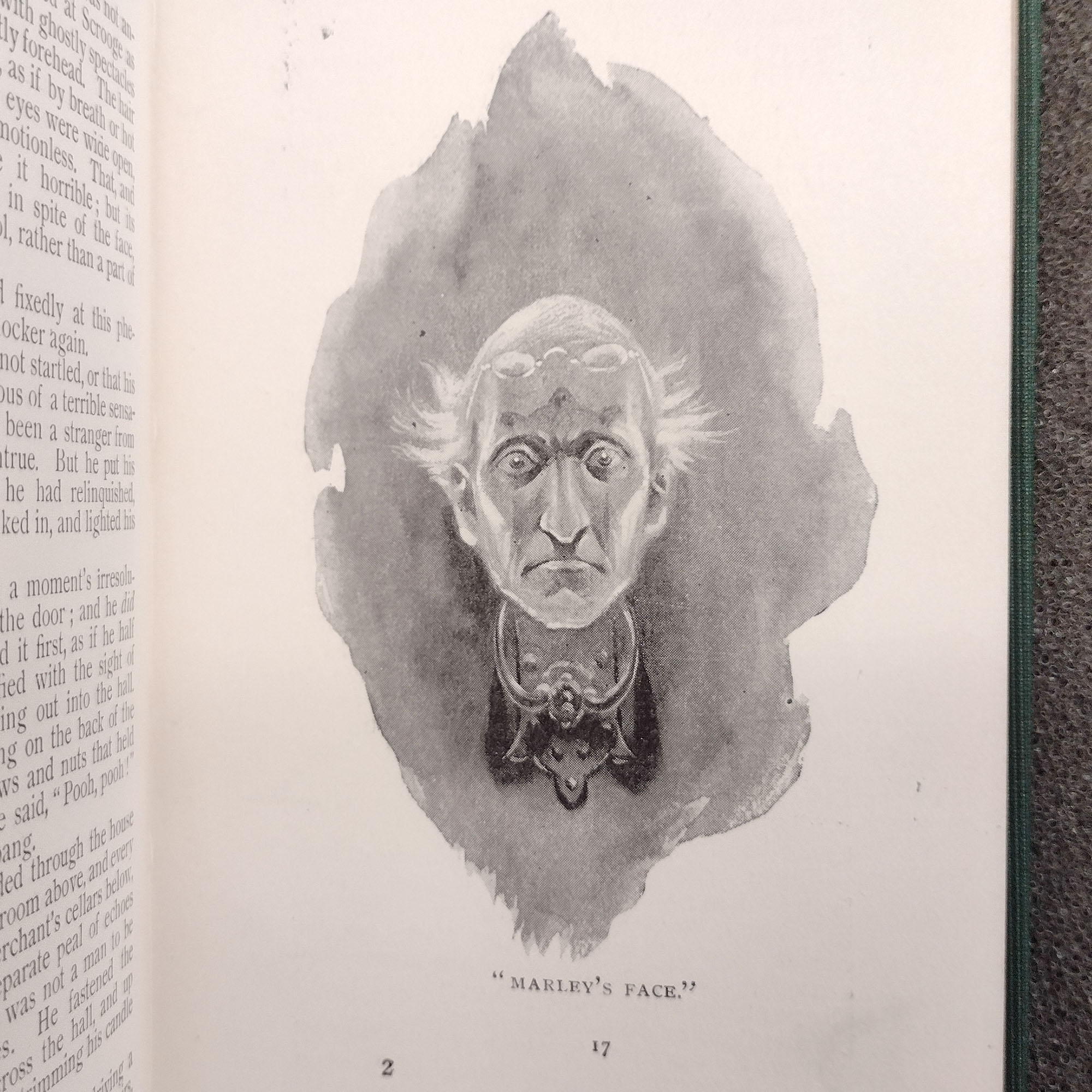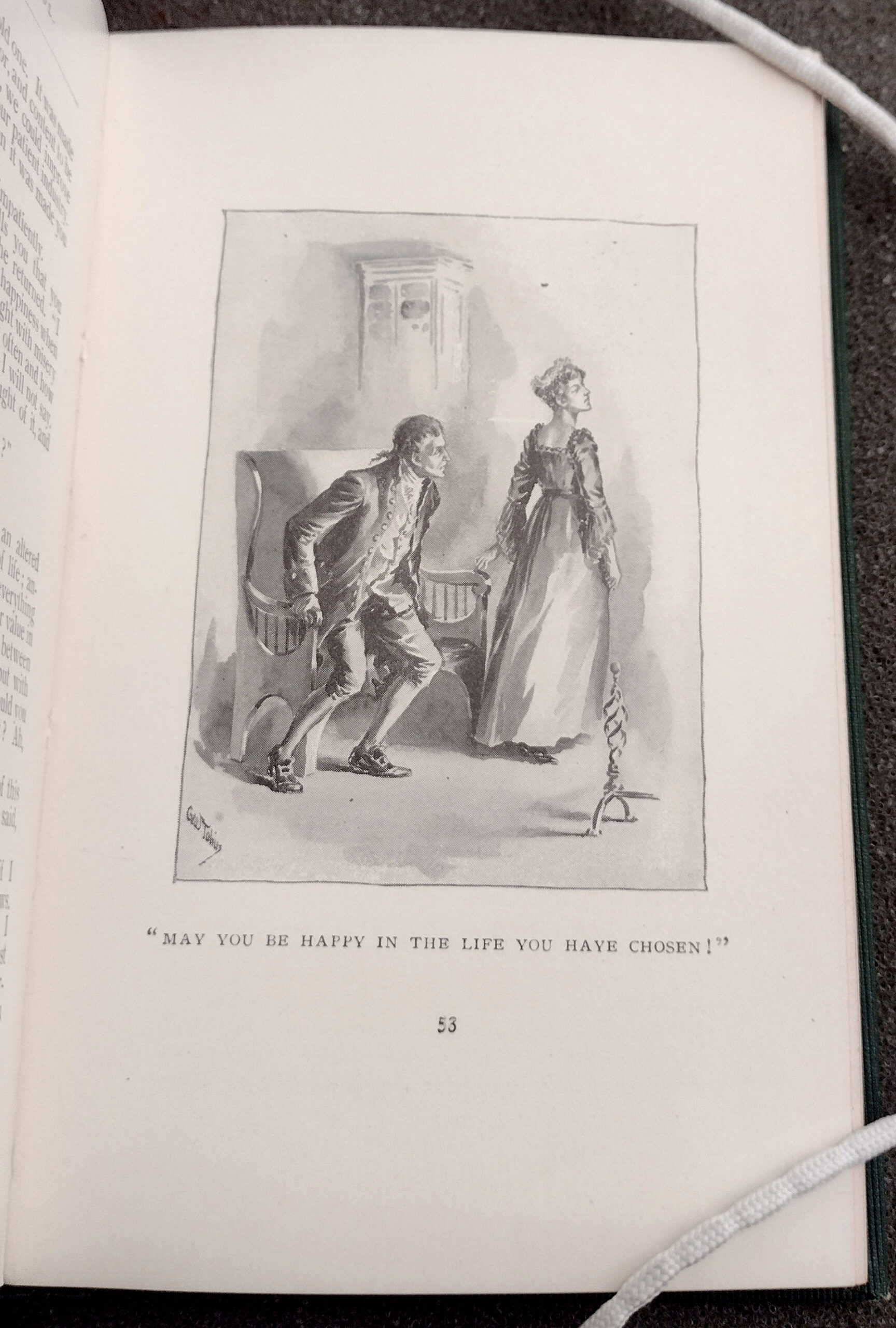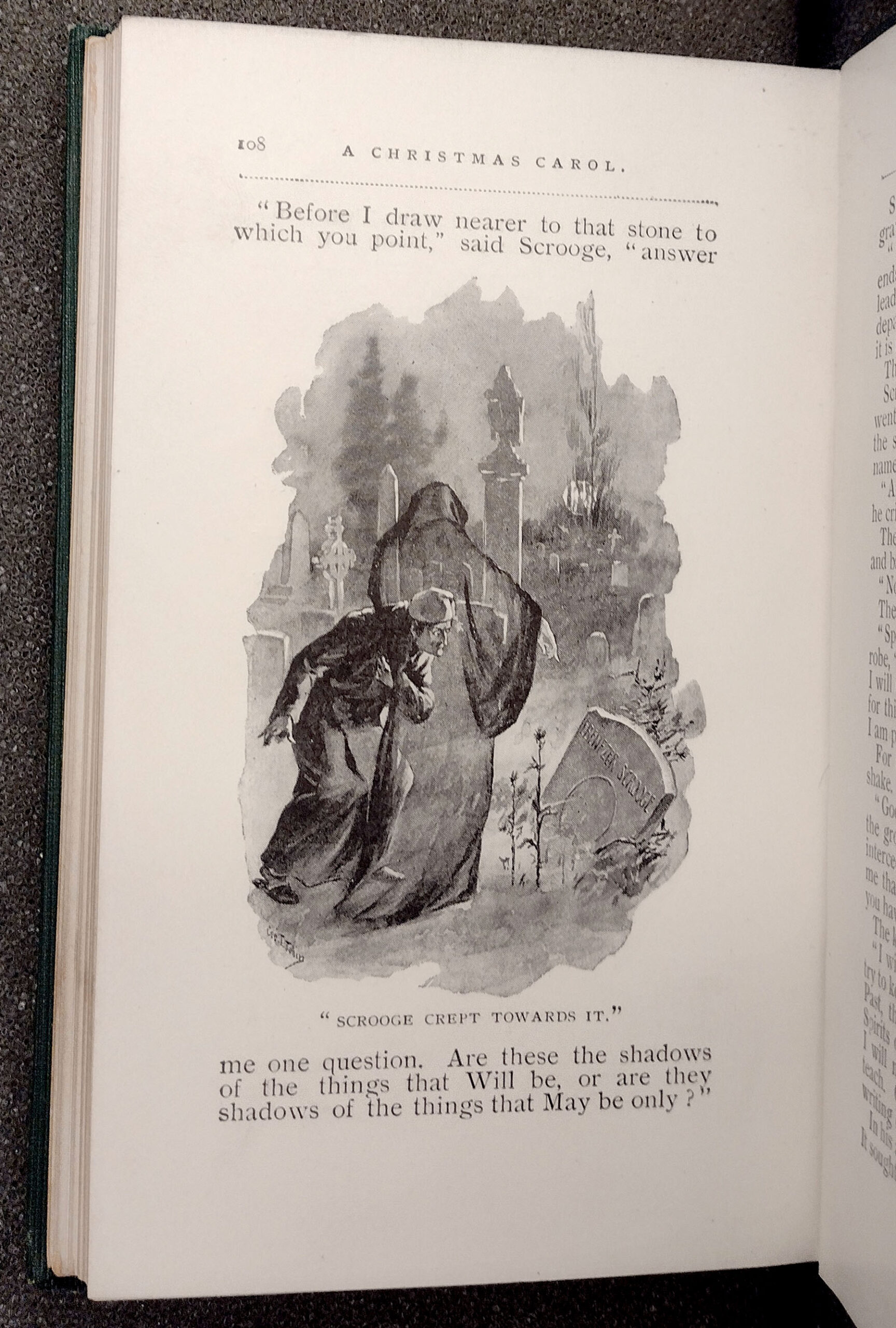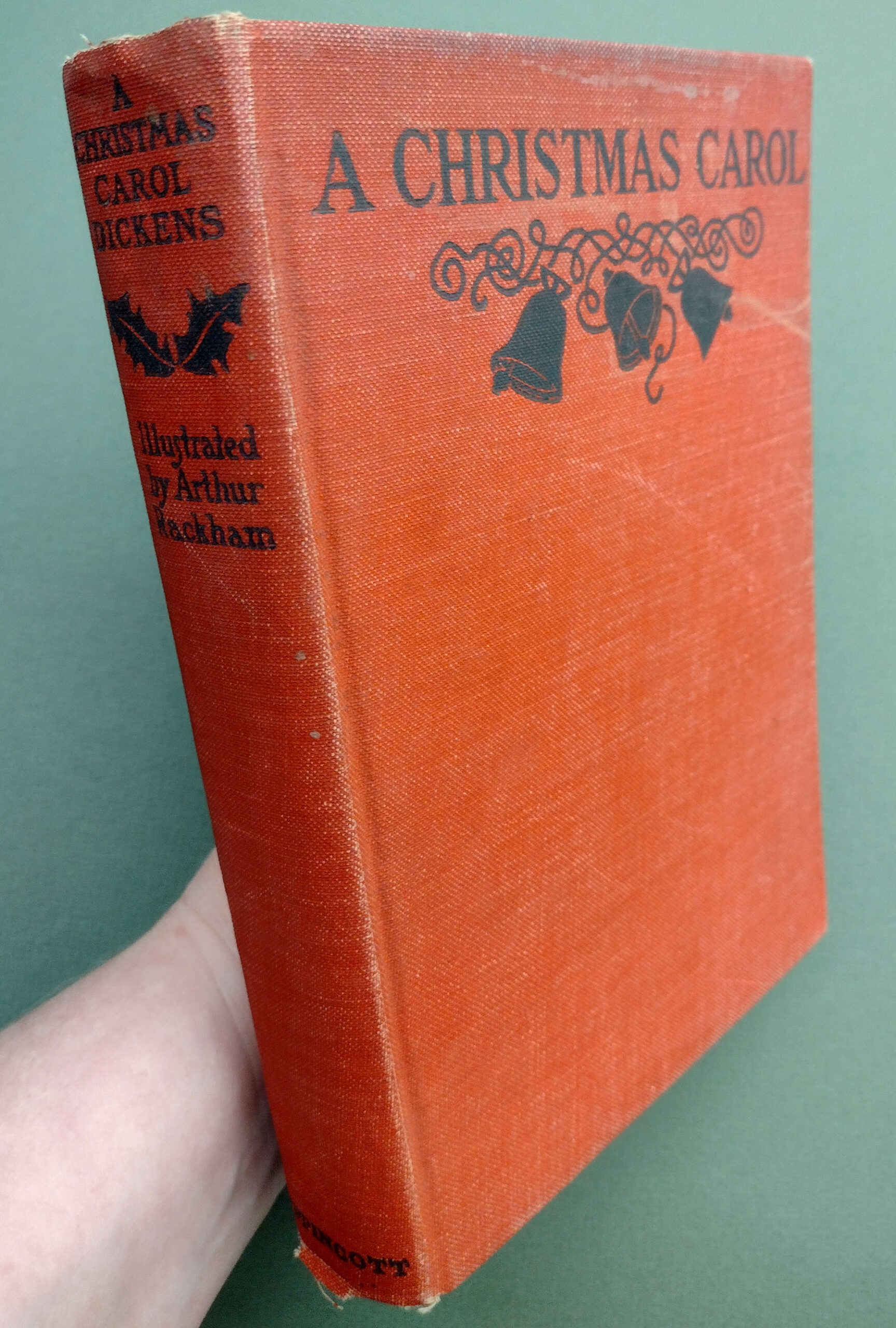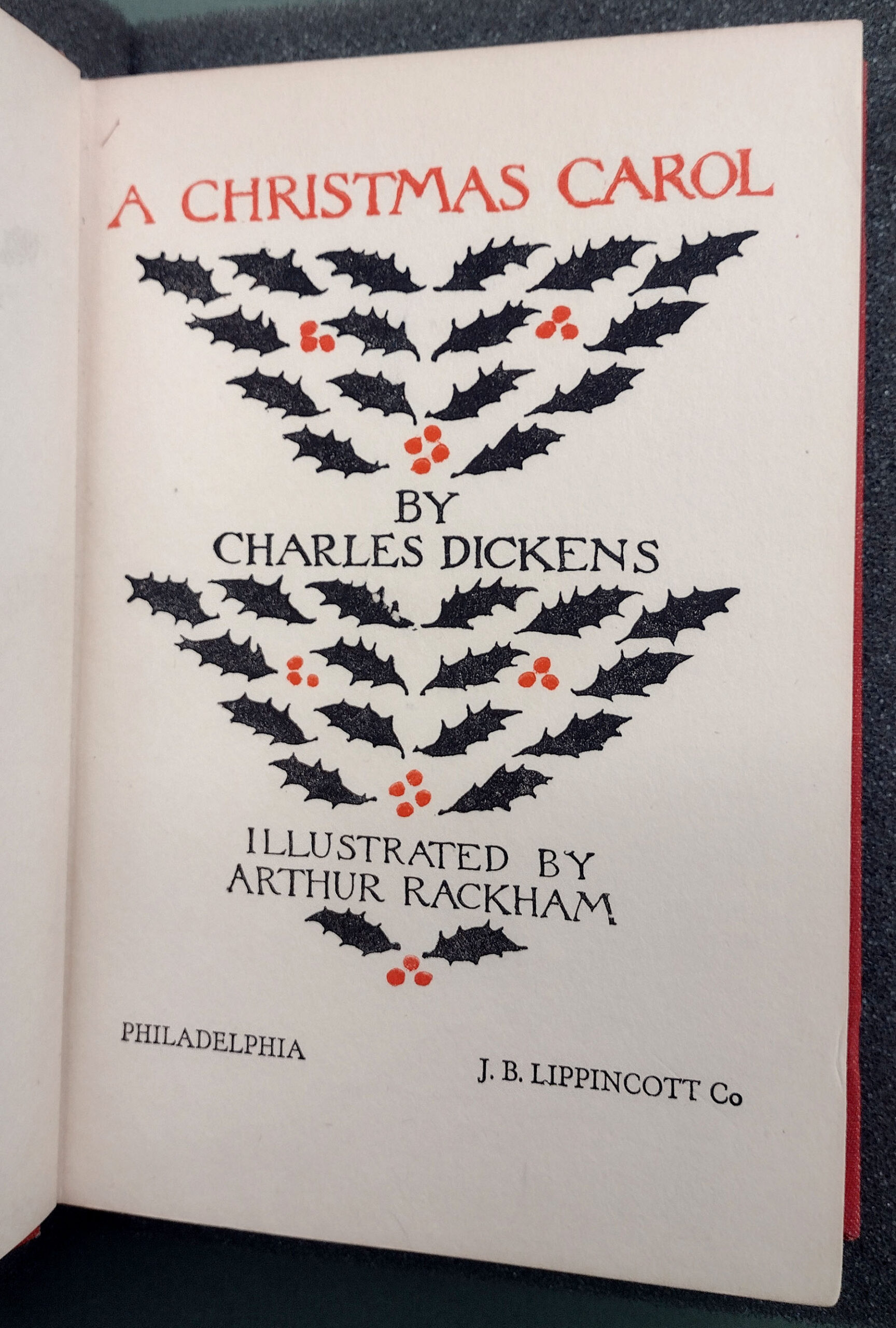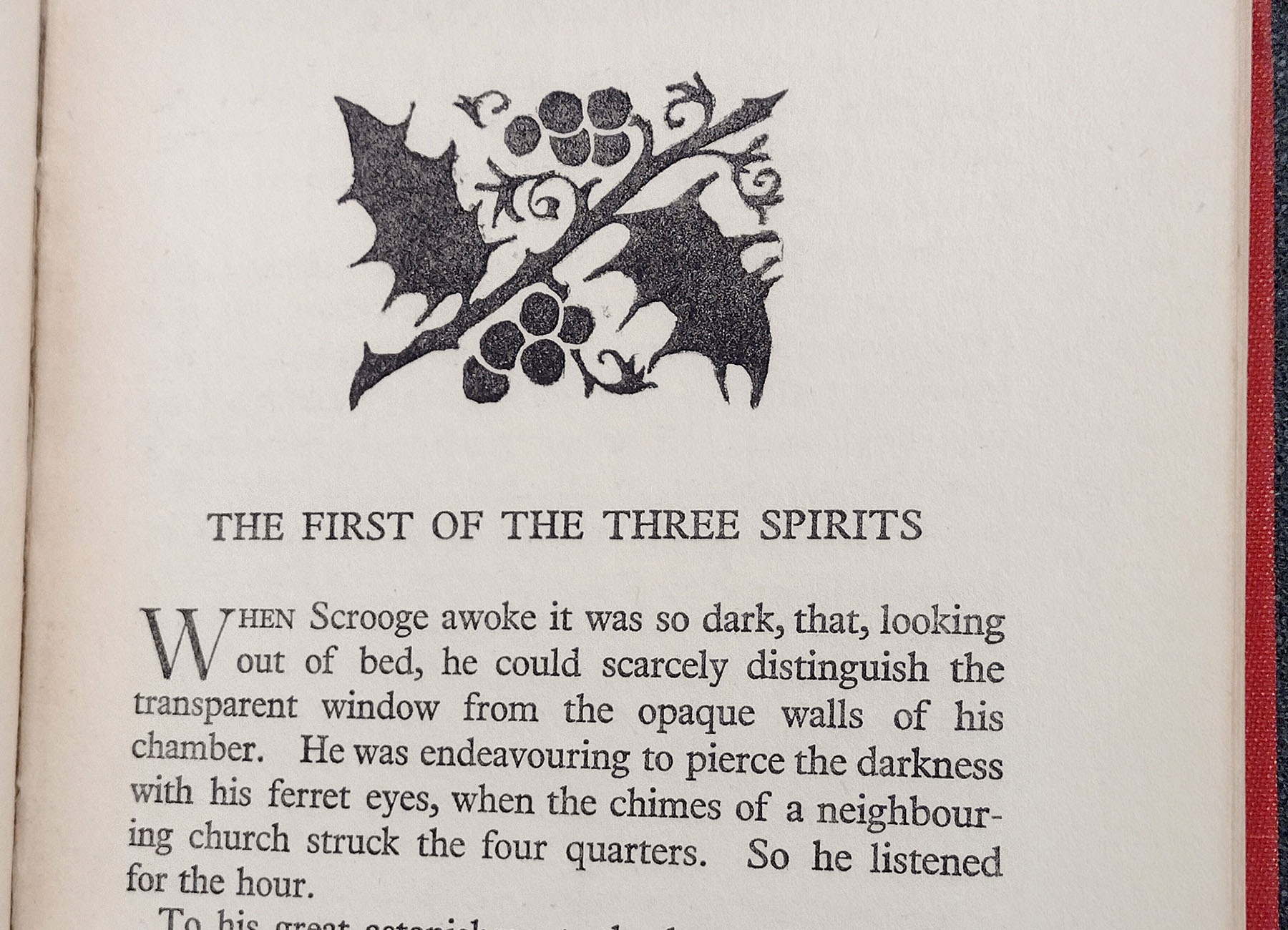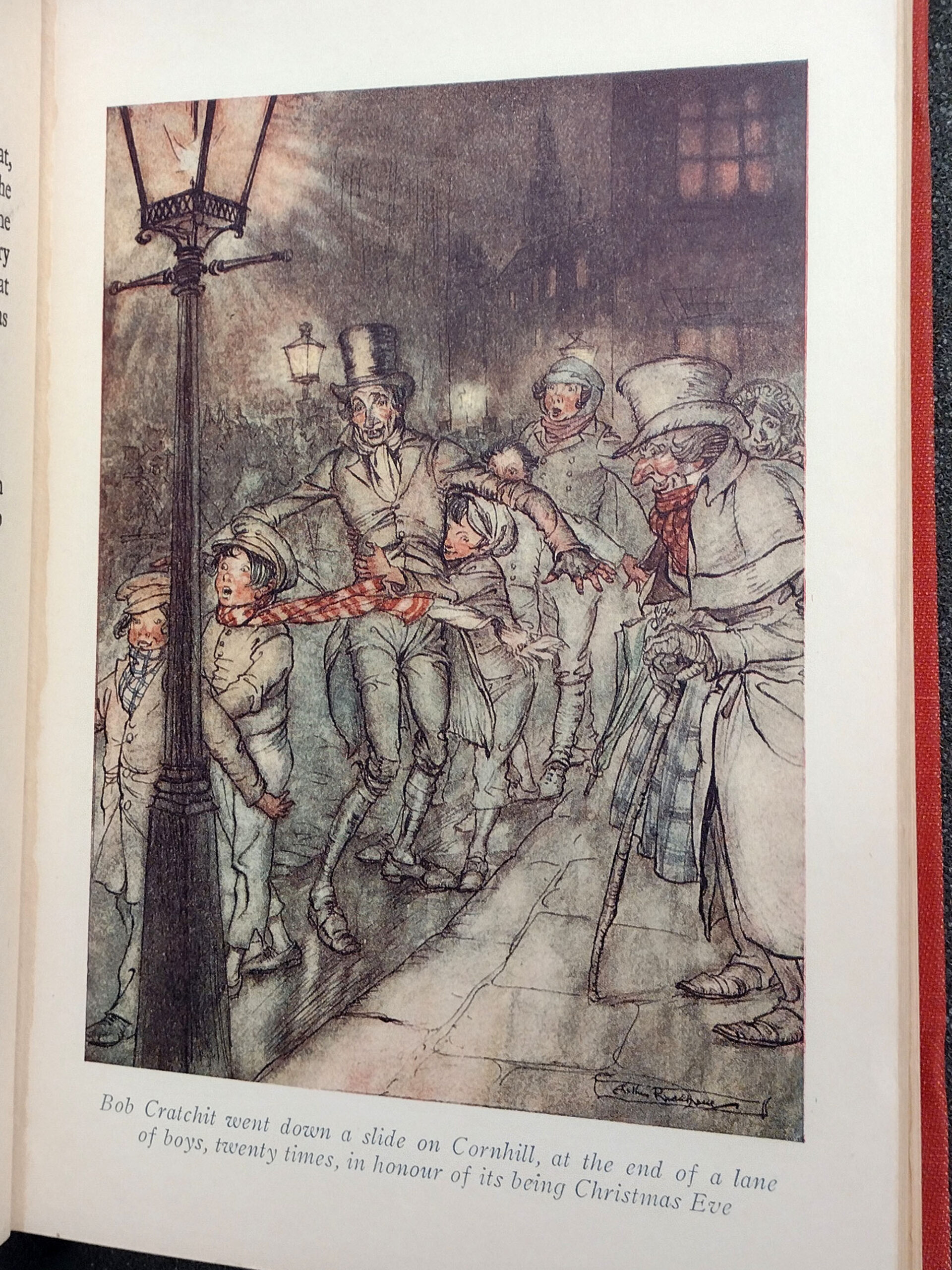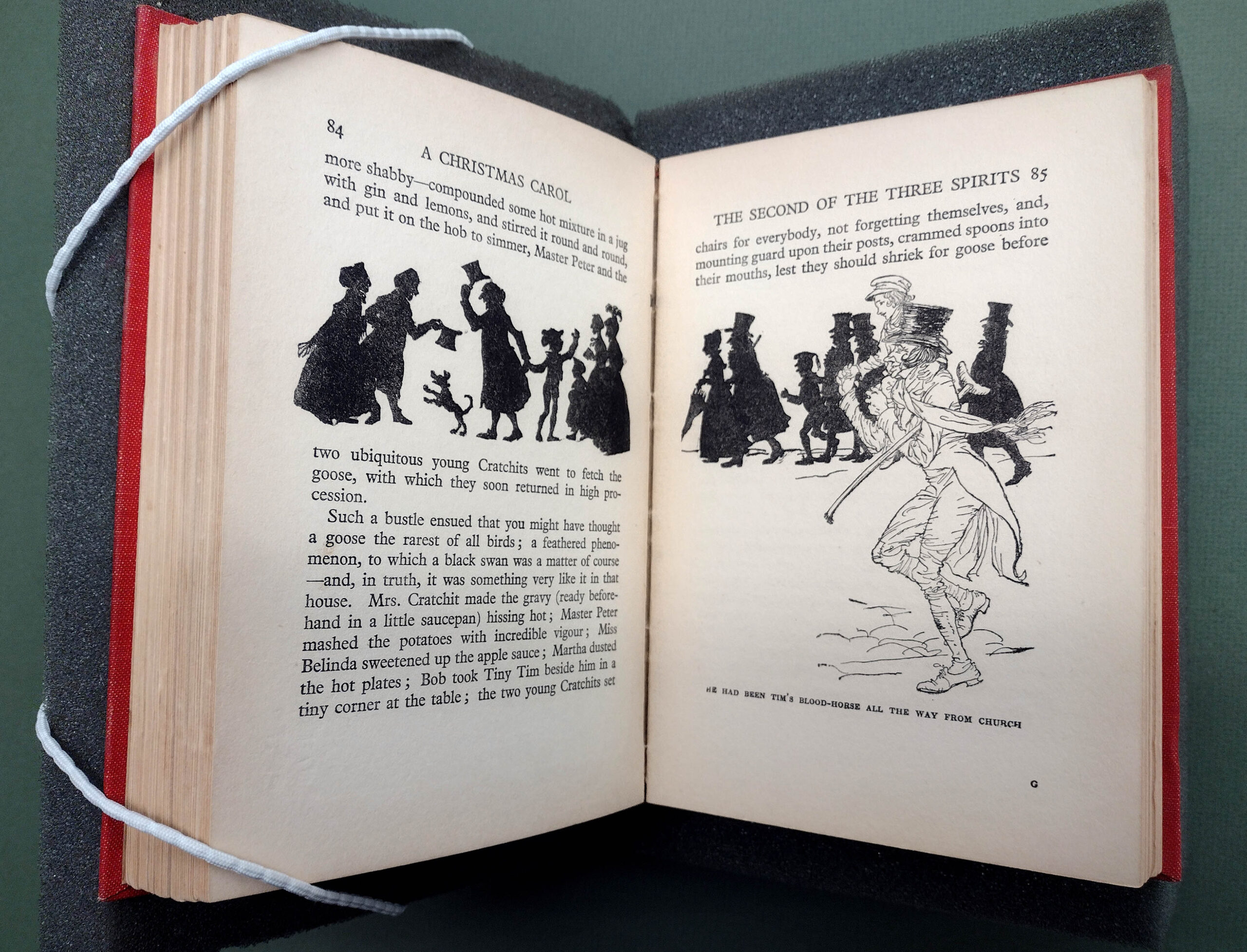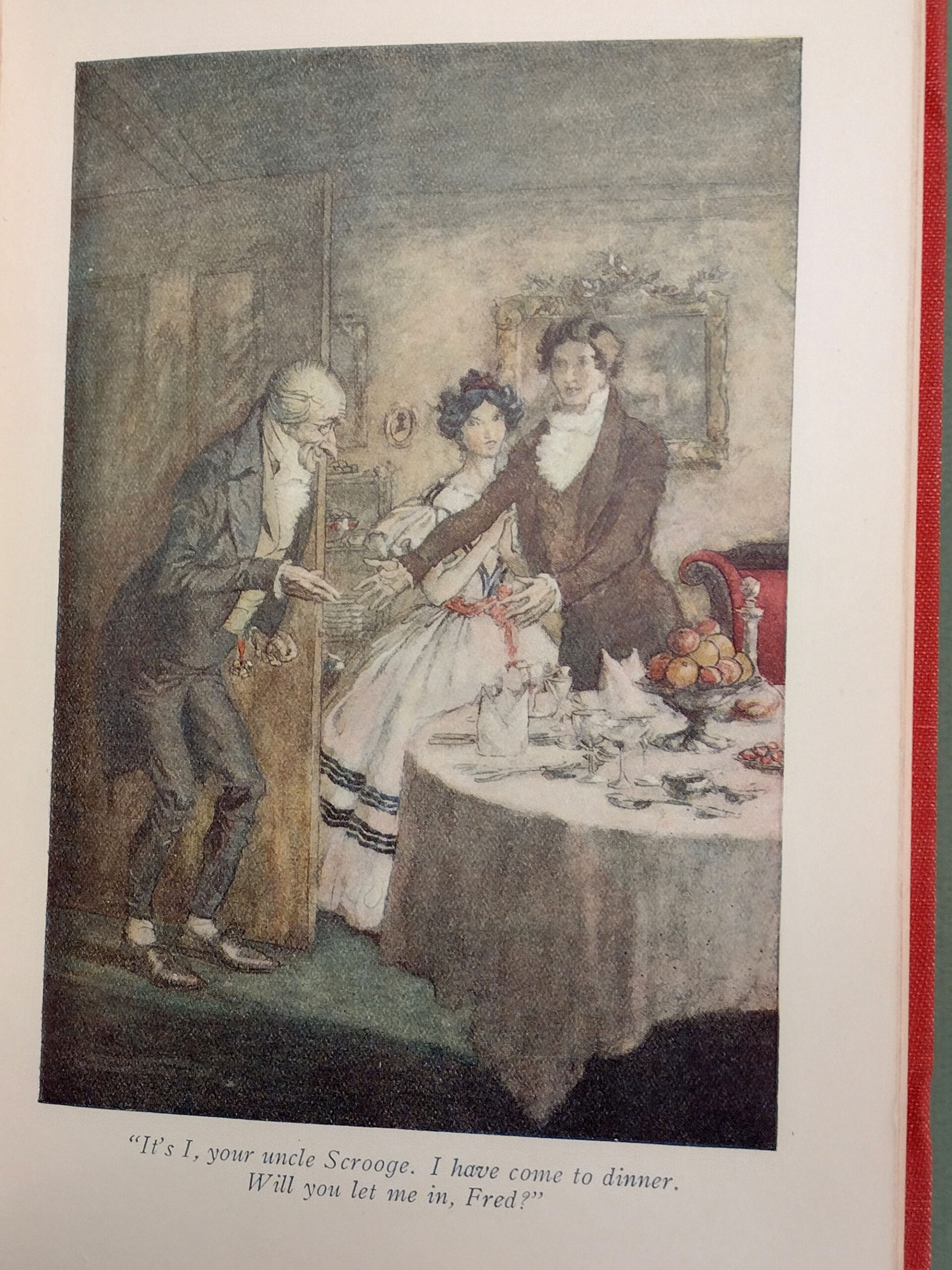Guest post by Sarah Fitzgerald, Book Division volunteer
***
Many of our Christmas traditions come from the Victorian Era, including the decoration of Christmas trees and Charles Dickens’ story, A Christmas Carol. The Clements has several versions of A Christmas Carol, including an original 1843 printing illustrated by John Leech. John Leech’s colored etchings are very expressive.
In the illustration of Mr. Fezziwig’s ball, which serves as the frontispiece, Mr. and Mrs. Fezziwig look well fed and good natured and the rest of the guests seem to be enjoying themselves heartily, particularly the couple kissing under a handful of mistletoe. The illustration of the ball makes a sharp contrast against the illustration showing the bleakness of Scrooge’s parlor, with it’s single candle struggling to dispel the gloom, where Jacob Marley’s ghost has come to warn Scrooge to change his miserly ways. Scrooge looks almost as ghostly as his dead partner, as he tries to distance himself from the eerie, transparent sight of Marley in his chains forged from cash-boxes and keys with his head bandaged to keep his jaw on. The picture is done in color, which draws attention to how very little color or gaiety Scrooge has in his home. The same room is transformed into a bower of warmth and bounty when the giant Ghost of Christmas present arrives with climbing plants and rich foods, dressed in a fur trimmed robe, bare-chested and barefooted with a wreath for a crown, a bit like a mixture of Jesus and Santa Claus.
Leech also created black and white woodcuts such as Scrooge trying to snuff out the radiant light of the child-sized first spirit with its own hat.
***
In 1844 A Christmas Carol came to America, in the form of a paper pamphlet. It was priced at 6 cents.
***
In 1899 an edition illustrated in watercolor by George T. Tobin was published. Tobin illustrated Dickens’ personification of the December London fog as “The Genius of the Weather” as a corporeal old man hunched against the cold. His version of Marley’s staring face on Scrooge’s doorknocker is painted in angular relief, as if lit by hellfire and the hair and the background also rise into the shape of flames.
Although many of Tobin’s watercolors are spooky, Tiny Tim and Bob Crachit make a tender sight, with Tim perched on his father’s shoulder, holding his crutch in hand with help from Bob and each of them is turning his head to look fondly at the other.
***
Rackham’s illustrated books were popular as Christmas gifts in the early 20th century. This book contains three color images, including Bob Crachit enjoying an icy slide on his way home from a difficult Christmas Eve at work.

